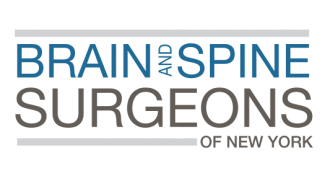
Facial & Cranial Pain Ablative Procedures
Surgical ablation is a term used for minimally invasive procedures that block, damage, or destroy tissues that are responsible for conveying pain signals. Ablative procedures are used in numerous medical specialties, including neurosurgery. There are many ways tissue can be eradicated, including radiation, cryotherapy, lasers, or chemical solutions. When nerves that provide signals to the neck, head, or face aren’t working properly, and medications aren’t controlling the pain, ablative procedures for facial and cranial pain are a popular, minimally invasive method of treatment.
TYPES OF PROCEDURES:
Gamma Knife Radiosurgery
Gamma Knife Radiosurgery is a procedure that uses targeted beams of radiation to impair nerves that are causing facial or cranial pain. The Gamma Knife Radiosurgery is extremely precise and spares surrounding tissue, resulting in little to no side effects in most treatments. The outcomes of the Gamma Knife Radiosurgery for facial and other cranial pain are very effective in the majority of people; however, results are often delayed. Patients can expect to start responding to the treatment in four to six weeks, with full results seen six months after the procedures.
Commonly treated conditions:
Radiofrequency Thermorhizotomy
Another form of ablative procedure that is used to treat facial and cranial pain is Radiofrequency Thermorhizotomy. In this procedure, a nerve, nerve root, or nerve ganglion is targeted by an electrode whose tip is heated to cauterize the nerve, blocking the disrupted signals and relieving pain. This procedure is expected to result in numbness of the affected region; however, it is an effective option for individuals who aren’t candidates for more invasive procedures.
Commonly treated conditions:
Glycerol Rhizolysis
Some patients may be more suited for a Glycerol Rhizolysis to alleviate their pain; most commonly, this treatment is used for addressing Trigeminal Neuralgia. Instead of using radiation or heat, glycerol (a form of viscous alcohol) is injected to numb the nerve and reduce pain.
Balloon Microcompression
In some cases, it is effective to compress the trigeminal nerve to block pain signals. Balloon Microcompression is performed by inserting a surgical-grade tiny balloon in the trigeminal ganglion (a cluster of nerves near the temple) and is inflated to compress or interfere with the nerve signals, reducing or relieving pain while the patient is under brief anesthesia. Numbness in the affected territory and elimination of pain is the expected outcome.
Microsurgical Rhizotomy
Microsurgical Rhizotomy is the microsurgical sectioning of part of the sensory root of the trigeminal nerve using a very small opening in the skull bone.
Peripheral Neurectomy
Peripheral Neurectomy is occasionally used to treat Trigeminal or Occipital Neuralgia. It involves sectioning small sensory branches of the nerves under loop magnification or a surgical microscope.
Nucleus Caudalis DREZotomy
In cases where the cause of the facial pain is the result of an injury to the trigeminal nerve and other treatments have failed to bring the pain under control, a Nucleus Caudalis DREZotomy can be an effective treatment. This procedure targets the “DREZ” or Dorsal Root Entry Zone of the trigeminal nucleus. Located in the brainstem and spinal cord, the nucleus caudalis DREZ is the pain pathway from the face to the brain. Blocking signals from this area can reduce or eliminate chronic pain in the face when other treatments have not succeeded in controlling the pain. People suffering from Anesthesia Dolorosa caused by previous neurosurgical procedures for trigeminal neuralgia or patients suffering from Post-Herpetic Neuralgia may find relief from this procedure.










